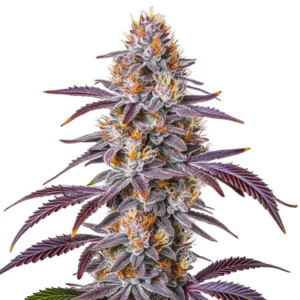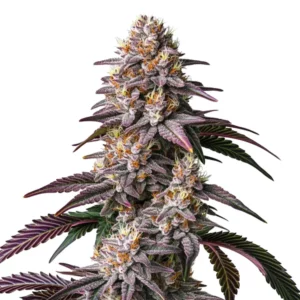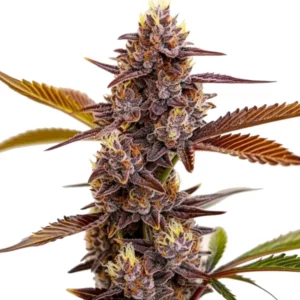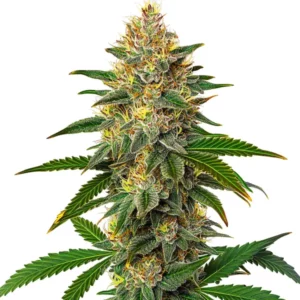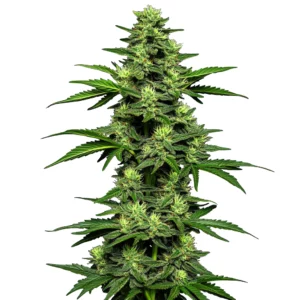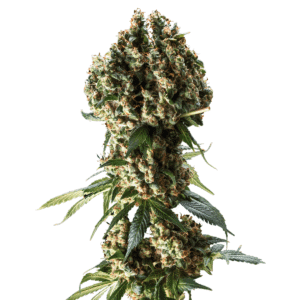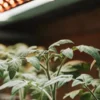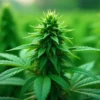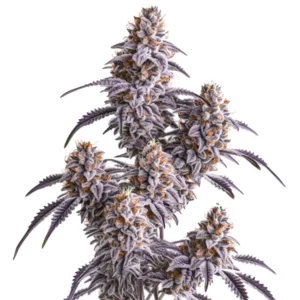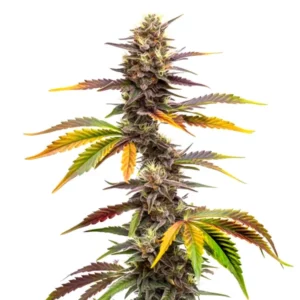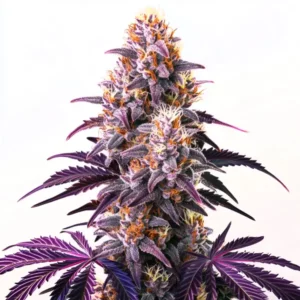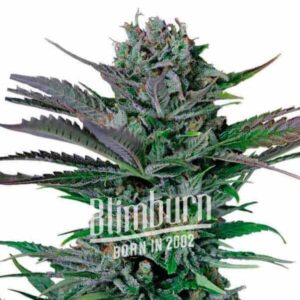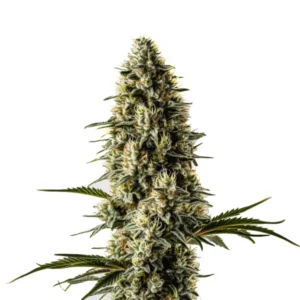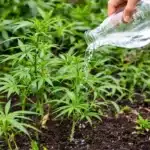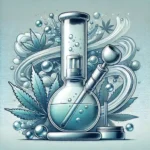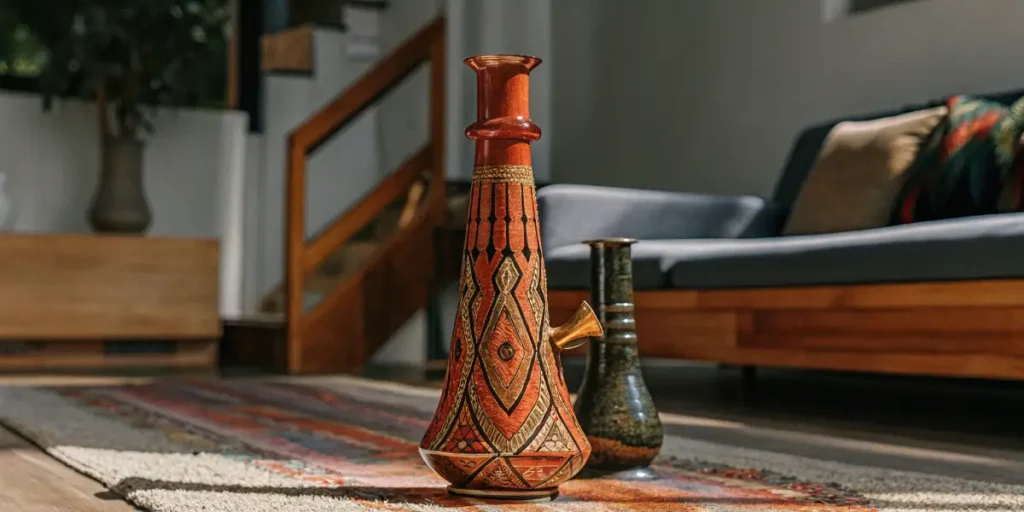
What is a Bong and How to Use
Bongs, often associated with the culture surrounding cannabis consumption, have a rich history and are a popular choice for many looking to enjoy their herbal substances in a unique way. This guide aims to explore every facet of bongs, from their historical origins to the science behind their operation, offering both novices and seasoned enthusiasts valuable insights into these fascinating devices.
What is a Bong?
The bong is an iconic instrument in the world of herbal consumption, valued for its ability to filter and cool smoke through water, offering a smoother, more enjoyable experience. Knowing its components, varieties, and how it functions can greatly improve your appreciation and use of this time-honored device.
Recommended Strains
Promos & Deals
History of Bongs
When we ask, “What is a bong?” we delve into a history that spans several continents and millennia. The bong, often seen as a modern device for consuming various herbs, actually has its roots deeply embedded in ancient history, illustrating a fascinating journey from primitive tool to sophisticated smoking apparatus.
Origins in Ancient Civilizations
The story of the bong begins in Africa, where the earliest evidence suggests that tribes developed a simple form of water pipe out of earthenware and bamboo. These ancient devices were likely used in ritualistic settings, playing a significant role in the social and spiritual lives of the community. From Africa, the concept of water filtration for smoke spread to Asia, particularly in China, where it was refined and integrated into the daily lives of the nobility and commoners alike.
Historical records and artifacts suggest that the bong was already a popular method for smoking tobacco in Ming Dynasty China. The word “bong” itself is derived from the Thai word “baung,” referring to a cylindrical wooden tube, pipe, or container cut from bamboo, and it’s fascinating to consider how these simple tools evolved into the complex glass creations we see today.
Evolution Through the Ages
As the use of water pipes spread across the globe, each culture added its own innovations to the basic design. In the Middle East, hookahs became a staple of coffee house life. These water pipes were often ornate, decorated with intricate designs and made from materials such as glass and metal. Hookahs were more than just a way to smoke; they symbolized status and social connection, further solidifying the importance of smoking devices in cultural rituals.
The 20th century saw a significant evolution in the design and functionality of water pipes, particularly with the introduction of glass designs in the 1960s and 1970s. These modern pieces offered a cleaner, purer smoking experience, allowing for the full flavor of the smoke to be enjoyed without the interference of the materials found in traditional pipes.
Glassblowers and artisans have since taken the concept of the water pipe to new heights, creating pieces that are not only functional but also works of art. Today, they are available in an array of sizes, shapes, and designs, ranging from simple and utilitarian to wildly imaginative and complex.
When pondering what a water pipe is, it’s clear that its history is as rich and varied as the cultures that have embraced it. From ancient ceremonial tools to modern smoking devices, water pipes have proven to be adaptable and enduring. Their evolution speaks to the human desire for communal experiences and the enjoyment of herbs in a manner that is both pleasurable and ritualistic. As we look to the future, it’s certain that water pipes will continue to evolve, but their roots in ancient history will always be a testament to their enduring appeal.
This journey through the history of bongs not only answers the question, “What is a bong?” but also highlights the device’s significant cultural and social impact across civilizations. As we appreciate the modern bong’s functionality and aesthetics, we’re also connecting with a tradition that has brought people together for centuries.
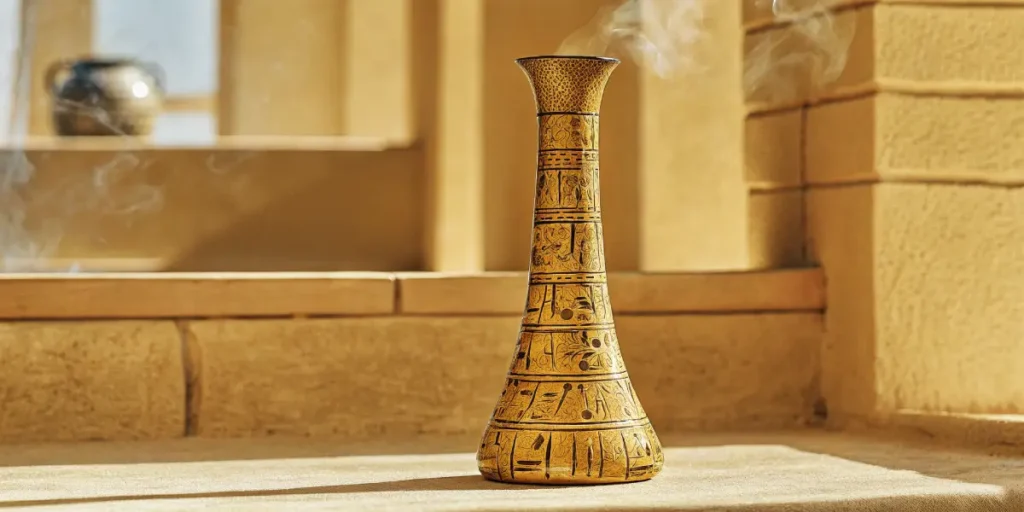
The Anatomy of a Bong
The anatomy of this device is essential for both newcomers and seasoned enthusiasts aiming to deepen their knowledge about how it functions. This exploration into the components that make up the device will help you understand why it’s such a popular tool for enhancing the smoking experience.
What is a bong? Simply put, a bong is a filtration device commonly used for smoking dry herbal substances and concentrates. The primary purpose of a bong is to cool and filter smoke through water, significantly improving the quality of the smoke by making it smoother and more flavorful. Now, let’s dissect the anatomy of a bong to uncover what makes it an efficient smoking apparatus.
Main Components
- Bowl: The bowl is where the dry herb is loaded and combusted. It’s usually detachable, allowing for easy loading and cleaning. The size of the bowl determines how much herb can be smoked at once, making it a critical component for both individual and group sessions.
- Chamber: The main body of the bong, the chamber is where the smoke cools and mixes with air before inhalation. The size and shape of the chamber can vary widely among different bong designs, affecting the cooling process and the overall smoking experience.
- Downstem: This small tube connects the bowl to the water in the bottom of the bong. It’s a crucial component for directing the smoke into the water for filtration. Some downstems are fixed, while others are removable for easy cleaning or replacement.
- Water Basin: The water basin is essentially the bottom part of the bong filled with water. The level of water is key; too little won’t filter the smoke effectively, while too much can make inhalation difficult. The water acts as a filter, cooling the smoke and trapping some of the heavier particles and contaminants, leading to a cleaner and smoother hit.
Types of Bongs
When considering what is a bong and its various types, material, and design play significant roles in its function and aesthetic appeal.
- Glass Bongs: These are the most popular type due to their clean taste, aesthetic appeal, and durability. Glass bongs also allow for easy monitoring of smoke flow and water level.
- Ceramic Bongs: Known for their artistic designs, ceramic bongs are heavier and more robust. They offer a unique aesthetic but can be more challenging to clean due to their opaque material.
- Acrylic Bongs: Acrylic bongs are the most affordable and come in a variety of shapes and colors. They are lightweight and durable, making them great for travel or as a starter bong.
- Bongs for Gas Mask: A bong for a gas mask combines the smoking experience with a gas mask attachment, offering a more intense and immersive experience. These types of bongs are popular among users looking for a unique and powerful way to consume their product. The gas mask allows for minimal smoke to escape, making the experience more concentrated.
We recommend that if you want to buy a bong visit Olofly.
How Bongs Work
These devices have captivated users and enthusiasts for centuries, not only as tools for inhaling vapor or smoke but also as objects steeped in history and cultural significance. Beyond their visual and historical charm, there’s a fascinating science behind how they function. This section will explore the mechanics, highlighting how water filtration and smoke cooling enhance the overall experience. Understanding how they work allows users to appreciate both their practicality and the artistry in their design and use. Additionally, we will address common questions about their purpose and provide helpful tips on using them effectively.
The Science of Water Filtration
At the heart of a bong’s functionality is water filtration. When smoke passes through water within the bong, several processes occur simultaneously. Firstly, water acts as a filter, trapping particulate matter and reducing the amount of tar and other harmful substances inhaled. This filtration process is crucial for those concerned about the health impacts of smoking, as it can significantly lower the exposure to carcinogens and other toxins.
Moreover, water-cooled smoke is far less harsh on the lungs. The cooling effect is not merely a matter of comfort but can also reduce the risk of irritation and damage to the respiratory tract. This aspect of bong usage is particularly appealing to individuals seeking a smoother smoking experience without the harshness associated with dry smoking methods.
Benefits of Using a Bong
The benefits of using a bong extend beyond smoother hits and cleaner smoke. Bongs also allow for a more controlled dosage, as the user can visually gauge the amount of smoke being inhaled. This control is particularly beneficial for beginners or those who prefer to moderate their intake.
Another advantage is the enhancement of flavor. Water filtration can remove some of the combustive flavors, allowing the natural essence of the herb to shine through. For connoisseurs of cannabis and other herbs, this means a purer and more enjoyable taste experience.
Bong How to Use
Using a bong may seem intimidating at first, but the process is straightforward once you understand the basics. Here’s a simple guide on how to use a bong:
- Fill the Bong with Water: Begin by adding enough water to submerge the downstem. The exact amount of water can vary depending on the bong’s size and design but aim for just enough to create effective filtration without risking splashback during use.
- Prepare Your Material: Grind your herb to a consistency that allows for optimal airflow without being so fine that it passes through the bowl’s holes.
- Pack the Bowl: Gently pack the ground herb into the bowl. Ensure it’s not too tightly packed, as proper airflow is essential for an even burn.
- Light and Inhale: With your mouth on the mouthpiece and the bowl loaded, apply flame to the herb and gently inhale. The water in the bong will bubble as the smoke rises through it, cooling and filtering before it reaches your lungs.
- Clear the Chamber: Some bongs have a “carb,” a small hole that allows air to enter and clear the smoke from the chamber. If your bong has a removable bowl, you can lift it to achieve the same effect.
By learning “what is a bong” and “bong how to use” it properly can significantly enhance the smoking experience, offering a cleaner, smoother, and more flavorful inhalation. Whether you’re a seasoned user or a newcomer curious about the world of bongs, the science and art of bong usage are as fascinating as they are ancient, continuing to evolve and captivate users around the world.
The Cultural Impact of Bongs
Bongs in Popular Media
The portrayal of bongs in movies, music, and television has significantly influenced how the public views these devices, often emphasizing their social and recreational purposes.
Legal and Social Considerations
The legal landscape surrounding bongs is complex and varies widely by region. This section delves into the social implications and legal considerations of bong use, offering a balanced view of their place in society.
DIY Bongs: Crafting Your Own Experience
In the expansive world of herbal consumption, the term is synonymous with an immersive smoking experience. But what if we told you that beyond knowing what it is, you could create your own? This section explores the art of DIY devices, offering guidance on how to craft a personalized piece that not only works efficiently but also reflects your creativity.
Materials and Methods
The first step in creating your DIY bong involves selecting the right materials. Common household items such as plastic bottles, glass jars, or even fruits like apples can be transformed into a functional bong. The key is ensuring that the materials you choose are safe to use and won’t emit harmful substances when in contact with heat.
- Plastic Bottles: Easily shaped and accessible, plastic bottles can be a quick solution for a DIY bong. However, it’s crucial to use them cautiously as the plastic can affect the taste and potentially release chemicals when heated. Always keep the flame away from direct contact with the plastic.
- Glass Jars: A more durable and safer option, glass jars can be converted into elegant bongs. You’ll need a drill to create holes for the downstem and mouthpiece, but the effort pays off with a cleaner and more aesthetically pleasing device.
- Fruits and Vegetables: For those looking to experiment, fruits like apples or watermelons can serve as biodegradable, one-use bongs. Not only do they add a unique flavor to your smoke, but they also make for an intriguing conversation starter.
Safety Considerations
When embarking on your DIY bong project, safety should always be your top priority. Here are some guidelines to ensure that your homemade bong is safe to use:
- Avoid using materials that can release toxic fumes when heated. This includes certain plastics, metals, and rubber.
- Ensure airtight seals around the connections. This might require the use of non-toxic sealants that are safe for consumption.
- Test your bong with water first to check for leaks and ensure that the airflow is unobstructed.
Creating a DIY smoking device is not just about answering the question, what is it? It’s about embedding your personality and preferences into something that reflects your unique approach to smoking. Whether you’re crafting a makeshift piece out of necessity or as a creative project, the process itself can be as rewarding as using the finished product.
By evaluating the materials available and focusing on safety, you can craft something that is both functional and uniquely yours. This process not only broadens your knowledge of smoking devices but also strengthens your appreciation for the delicate balance between design, function, and personal style in the smoking experience.
Maintaining your device is crucial not only for its longevity but also for providing a pleasant and safe smoking experience each time you use it. Regular and proper care can prevent the buildup of resin and other particulates, which can affect the flavor of your smoke and potentially harm your health. Here’s how to keep your smoking tool in top-notch condition.
The Importance of Cleanliness
A clean bong is fundamental to its operation. Over time, bongs can accumulate a variety of residues, including tar, ash, and other byproducts of smoking. These residues can not only taint the flavor of your smoke but also harbor bacteria and mold, posing health risks if not addressed. Regular cleaning ensures that your smoking experience is as clean and pure as possible, reflecting the true essence of what a bong is meant to offer.
Cleaning Solutions for Every Bong
The market is filled with a variety of cleaning solutions designed specifically for bongs, from simple homemade mixtures to advanced commercial formulas. A popular and effective homemade solution involves a mixture of isopropyl alcohol and coarse salt. The alcohol serves as a solvent, breaking down resin and other sticky substances, while the salt acts as a gentle abrasive to scrub away residues. For those who prefer ready-made solutions, numerous specialized cleaning products are available that are formulated to tackle tough bong residue without damaging glass, ceramic, or other materials.
Step-by-Step Cleaning Process
- Disassemble Your Bong: Start by taking apart your bong, separating the bowl and downstem from the main body. This allows for more thorough cleaning of each component.
- Rinse with Warm Water: Rinse each piece with warm water to remove any loose particulates. This step prepares the surfaces for a deeper clean.
- Apply Cleaning Solution: For each part of the bong, apply your chosen cleaning solution. If using the homemade alcohol and salt mixture, ensure that the salt can get inside the chambers to act as an abrasive.
- Shake and Soak: Seal the openings of the bong and shake gently to allow the cleaning solution to work its way through all the nooks and crannies. Let the components soak if necessary, especially for heavy buildup.
- Scrub if Needed: For areas with stubborn residue, use a brush or sponge designed for bong cleaning to scrub gently. Ensure that the tools you use are safe for the material of your bong to prevent scratches.
- Rinse Thoroughly: Rinse each component with warm water again to remove any remaining cleaning solution and loosened residue.
- Dry Completely: Before reassembling your bong, ensure all parts are completely dry to prevent any water spots or mildew formation.
Regular Maintenance Tips
- After Each Use: Quick rinses after each use can prevent significant buildup, making deep cleaning sessions less frequent and less laborious.
- Storage: Store your bong in a cool, dry place to avoid exposure to dust and direct sunlight, which can degrade materials over time.
- Replacement Parts: Inspect your bong regularly for any signs of wear or damage, especially the bowl and downstem. Replacing these components when necessary can keep your bong functioning properly and safely.
What is a Bong? A Tool Worth Maintaining
Remember, the care you give your bong directly affects the quality of your experience. Cleaning it regularly helps maintain its functionality and ensures every session is both enjoyable and safe. Whether you’re a long-time user or new to bongs, knowing and practicing proper maintenance is essential for getting the best out of each use.
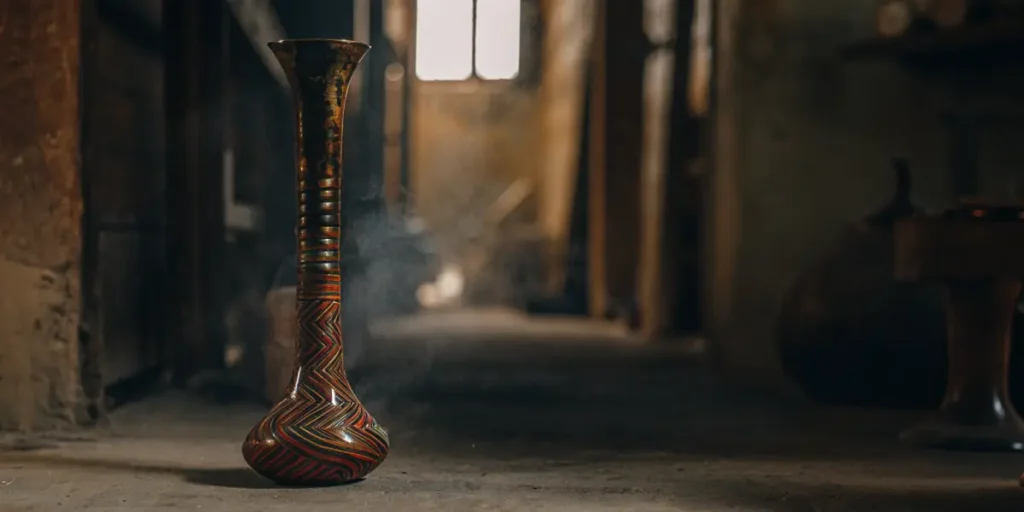
FAQs about Bongs
How does a bong enhance the smoking experience?
A bong enhances the smoking experience by filtering smoke through water, removing particulates and cooling the smoke. This filtration makes the smoke smoother and less harsh on the throat and lungs, potentially reducing coughing and allowing for a more enjoyable experience. The water also acts to preserve the flavor of the smoke, providing a purer taste of the substance being smoked.
Can you use any liquid other than water in a bong?
Yes, you can use liquids other than water in a bong to alter the flavor and cooling effects of the smoke. Common alternatives include adding ice to the water for extra cooling, using fruit-infused water for added flavor, or even non-alcoholic beverages. However, it’s important to avoid using substances that can be harmful when heated and inhaled, and to clean the bong thoroughly after using anything other than water to prevent residue buildup.
Are bongs legal to own and use?
The legality of owning and using a bong largely depends on your country and state’s laws regarding drug paraphernalia and cannabis use. In some regions, bongs can be legally purchased and owned as long as they are intended for use with legal substances, such as tobacco. However, in areas where cannabis is illegal, owning a bong could be considered possession of drug paraphernalia. Always check local laws to ensure compliance.
How often should you clean your bong?
It’s recommended to clean your bong regularly to ensure optimal performance and hygiene. A good rule of thumb is to clean it after every session, especially if you use it frequently. At a minimum, aim to give your bong a thorough cleaning once a week if you’re an occasional user. Regular cleaning prevents the buildup of resin and bacteria, ensuring a cleaner, healthier smoke.
What is the difference between a bong and a dab rig?
The main difference between a bong and a dab rig lies in what they are designed to smoke. Bongs are intended for smoking dry herbs, like cannabis flower, while dab rigs are designed for smoking concentrates, such as wax or oil. Dab rigs usually feature a nail or banger instead of a bowl, and they are typically smaller than bongs to maximize the flavor and efficiency of vaporizing concentrates.
Can bongs break easily, and how can you protect them?
The durability of a bong depends on its material. Glass bongs, while popular for their clean taste and aesthetic appeal, can break easily if dropped or knocked over. To protect your bong, consider investing in a bong made from more durable materials like silicone for everyday use, especially if you’re prone to accidents. Additionally, always store your bong in a safe, stable place where it’s less likely to be knocked over.
Is it better to buy a bong online or in a physical store?
Buying a bong online offers a wider selection and often better prices, but you can’t physically inspect the product before purchasing. In a physical store, you can get a better feel for the bong’s size, quality, and functionality, and often receive personalized advice from the staff. Your best choice depends on your priorities: variety and convenience online, or the ability to closely inspect and immediately take home your purchase from a store.

